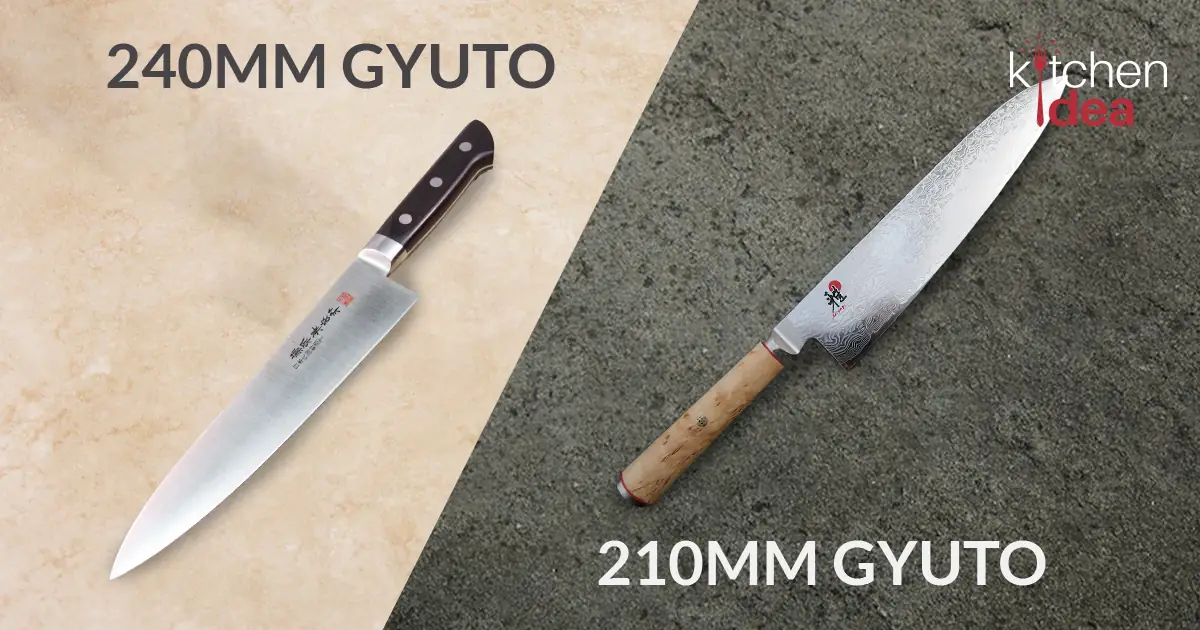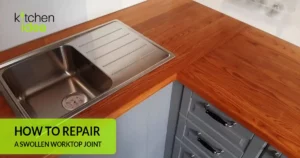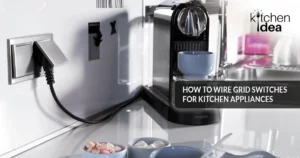We’ve got you covered if you’re looking to invest in a Gyuto knife and can’t choose between 210mm vs. 240mm Gyuto. Both options can be a good purchase, but the final decision depends on your overall cooking skills, which food items you plan to cut with it, and your budget.
What’s a Gyuto Knife?
Gyuto is a Japanese word that translates to Chef’s Knife in English and usually measures from 180mm to 300mm. However, literally translated, Gyuto is Gyu (Beef) and To (To cut) in Japanese. So, historically they were used to commonly slice and disjoint large slices of beef.
However, Gyuto knives have evolved into multipurpose knives and are suitable for slicing and cutting a range of meats, vegetables, fish, fruits, and herbs.
What Does a Gyuto Knife Look Like?
Gyuto Knives are comparatively longer than other kitchen knives, ranging from 180mm to 300mm. The blades are also double-beveled (sharp on both sides), and the tip is pointed and set close to the center of gravity.
Furthermore, the heel of Gyuto is curved inwardly, and there is a slight curve from the midsection to the tip of the blade. The heel is relatively flat and hence suitable for different chopping styles like – tap-chopping, push-cutting, and pull-cutting.
If you’re going for the 240mm Gyuto, it’ll have a larger 240mm blade as opposed to the 210mm variant.
Other Variants of Gyuto Knives
Besides coming in different sizes and finishes, the Gyuto knives also come in two distinct variants with some key differences, mostly in their handles.
The variants are –
- Kiritsuke Gyuto
- Wa-Gyuto
Kiritsuke Gyuto
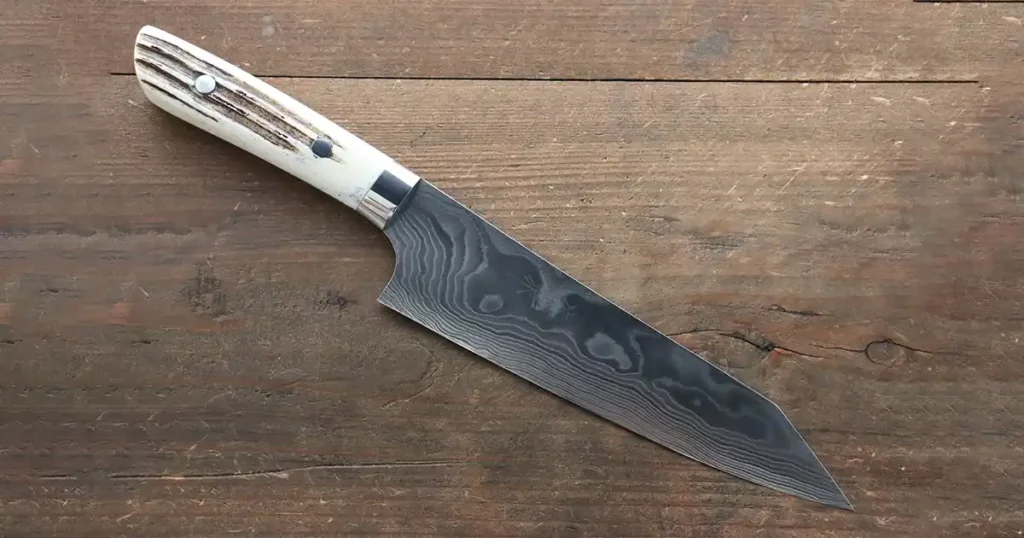
Kiritsuke Gyuto is also known as K-tip Gyuto, referring to the different shape and structure this variant of Gyuto has.
Instead of the curve from the mid-section to the top of the blade that Gyuto knives have, it has a flat edge. In turn, this makes the knife less optimal for users using a rock-chopping method but optimal for push-cutting or tap-chopping methods.
The blade ranges for Kiritsuke Gyuto range from 240mm to 330mm, but the 270mm variant is the best.
Wa-Gyuto
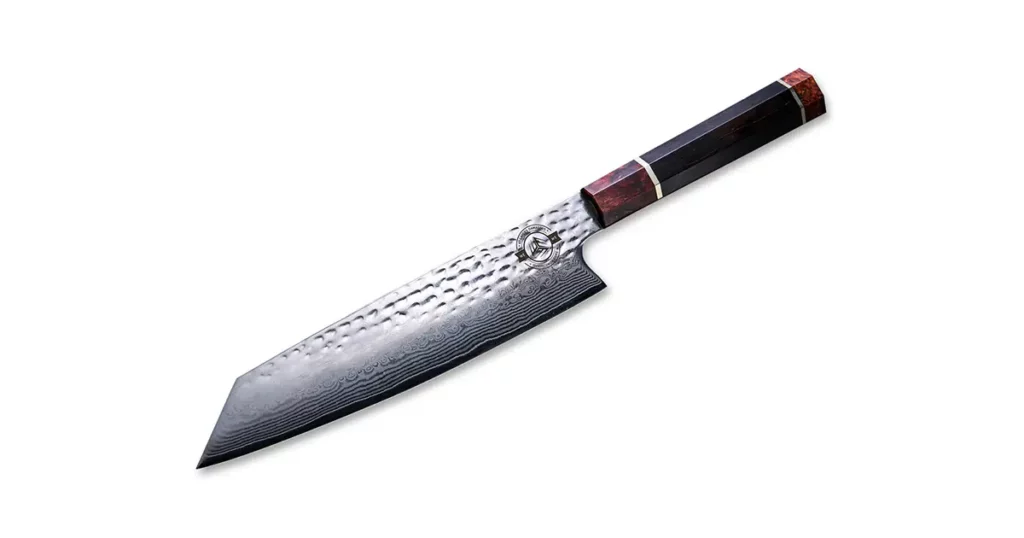
Wa-Gyuto is the other alternate variant of the Gyuto knife and is called “Wa-Gyuto” of the shape of the handle. The Wa-Gyuto comes with the traditional Japanese handle known as the Wa-handle.
The conventional Gyuto knives use western-style handles, usually composed of metal, plastic, or composite materials. On the other hand, Wa-Gyuto handles are typically made from Wood and, in turn, have a lighter feel.
Furthermore, due to the weight being lower and the knife being forwardly balanced to its tip, it’s maneuverable, just like conventional Gyuto knives.
210mm vs. 240mm Gyuto
Differences Between 210mm and 240mm Gyuto Knives
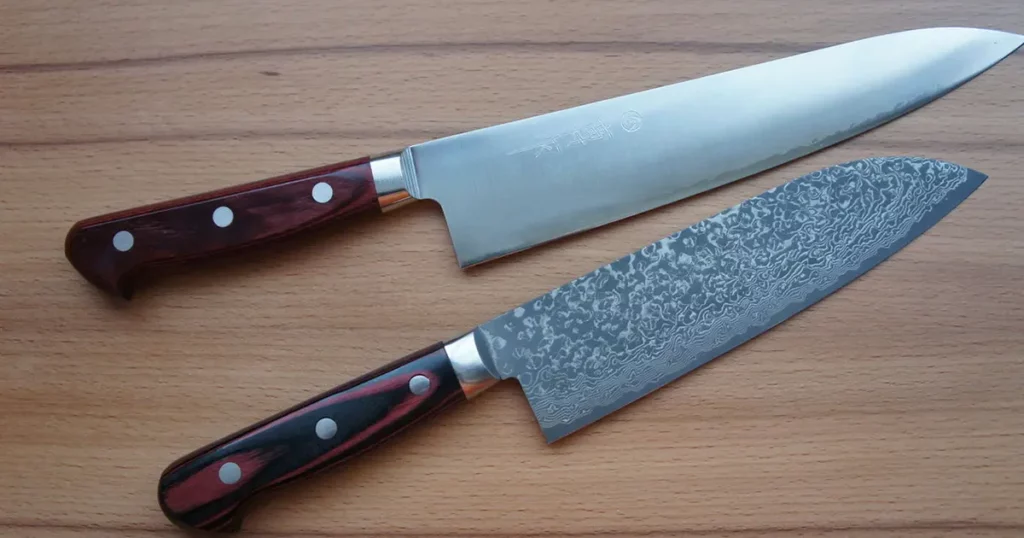
So now that you know what Gyuto knives are, their core features and about the sub-variants of Gyuto knives, you must be wondering what are the differences between 210mm and 240mm variants.
While they are mostly the same with a difference in size of blades, they have some further differences. Like –
| Stats | 210mm Gyuto Knife | 240mm Gyuto Knife |
| Weight | 144 grams to 276 grams | 166 grams to 294 grams |
| Height of User | Less or around 5.9 feets | More than 5.9 feets |
| User Experience Level | Beginners | Professionals |
| Ingredients to Use For | Vegetables, Small Fruits and Herbs | Vegetables, Large Food Items, Fruits, Herbs, Meats and more |
| Required Space | Small Kitchen Areas | Bigger Kitchen Areas Professional Restaurants |
| Grip | Combo Grip | Pinch Grip |
| Price | From $85(£73) to $321(£276) | From $138(£118) to $2117(£1822) |
So, depending on these stats and your budget you can now choose which variant would be better for you.
Pros and Cons of Gyuto Knives
Gyuto knives can be a great addition to your kitchen, and they come in various sizes, grip choices, and tip choices, but will they be good for you? There are multiple advantages and disadvantages for Gyuto knives, such as –
Pros
✅ Freedom of Choice – Gyuto knives come in various blade sizes, blade grips and tip choices.
✅ Suitable for everyone – Both amateurs and professionals can use Gyuto knives, and you just have to pick the right one for you.
✅ Versatile – Gyuto knives are good for slicing/cutting – fruits, vegetables, herbs, meat and more.
✅ Sharp – Gyuto knife blades are much sharper than their western counterparts due to the material used in the blade and being forward balanced.
✅ Light-weighted – Gyuto knives are comparatively lighter, making it easier to control
Cons
❌ Expensive – Gyuto knives are usually more expensive compared to other knives since they have superior build quality and materials.
❌ Harder to Sharpen – Because the blades of Gyuto are made with superior material, they are harder to sharpen.
Ending Notes
Gyuto Knives are one of the best kitchen knives you can get, and if you were undecided seeing the debate of 210mm vs. 240mm Guyto, our article should clear up the confusion.
While they can be comparatively expensive, Gyuto knives would be one of the best purchases for your kitchen since they’re very versatile. Even though historically it was used to slice large pieces of Beef, you can use them to slice and chop fruits, vegetables, herbs, and meat.

